Embrace Web2 and real assets, explore the interactive metaverse world of MUA DAO
Author: duoduoyu.eth, Deep Tide TechFlow
Has the metaverse failed? From Meta's own large-scale layoffs and the current state of the market, it is indeed in a period of dormancy for the metaverse concept. However, the retreat of hot money and the failures of single players do not equate to the inability of the leading player to cultivate success. The emergence of any new dominant player in history has always been built upon the corpses of past rulers; this is the nature of metabolism.
Returning to the development history of the metaverse itself, it can be simply divided into three stages:
In the 1990s, the initial concept was completed, with the biggest achievement being the transition from concept to attempts like "Second Life";
In the first decade of the 21st century, open-world games became the benchmarks for the metaverse, with the biggest achievements being Minecraft and Roblox;
In the second decade of the 21st century, the pandemic and Meta's VR hardware layout reaped the first wave of dividends, but a more specific path has yet to form a consensus.
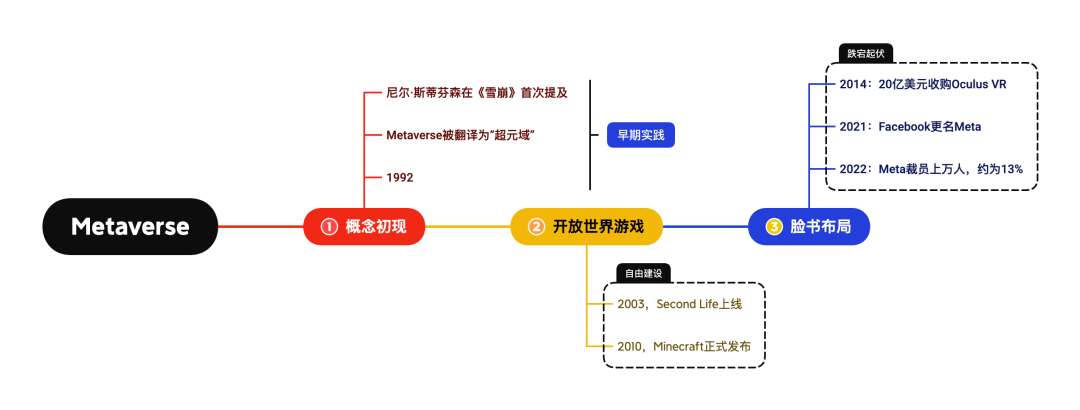
In other words, the metaverse is undergoing a paradigm shift, extending from a single gaming scenario to various fields such as industry, education, and healthcare; transitioning from fragmented, non-interconnected trenches to an integrated whole universe.
In early May, Alibaba Cloud, Avalanche, and MUA DAO joined forces to launch an enterprise metaverse solution called Cloudverse, leveraging the advantages of the three parties in cloud services, public chains, and the metaverse. This solution is built within the MUAverse developed by MUA DAO, reigniting hope for the metaverse.
MUA DAO hopes to lead the development of the metaverse's third stage, starting from solving consumer scenarios and gradually enriching the interconnectivity of internal NFTs and real-world assets, where the future of the metaverse also lies waiting to be explored.
In this collaboration, MUA DAO will provide full-scenario middleware services for Cloudverse, from creation to customization, offering unified programmability and interoperability for various users. The self-developed metaverse platform MUAverse will also provide new possibilities for envisioning the future of the metaverse.
So, who is MUA DAO? What unique advantages does MUAverse have? We will explore this together in the following text.
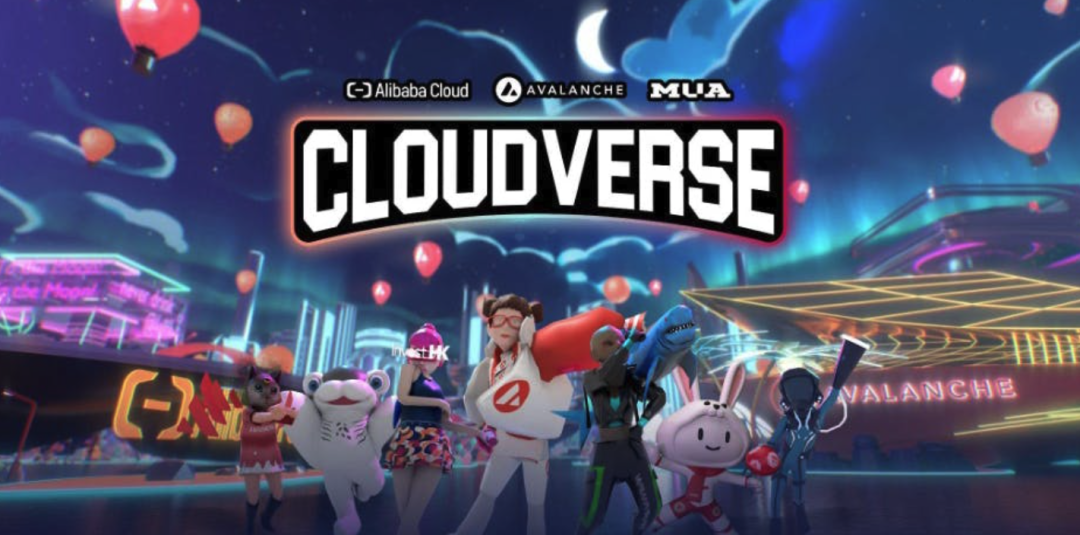
MUA DAO's Three-Step Strategy: From Fragmentation to an Interactive Whole Universe
We start from the problem; the lack of interoperability is currently the focal point of all issues. Meta's desire to monopolize channels with a Web2 mindset is destined to fail!
In "Rick and Morty," Rick has the ability to freely traverse the observable universe, with any configuration between parallel universes being interchangeable, including family, partners, and worldviews. However, in the last wave of the metaverse craze, what we saw more was boundless fragmentation, which can be described as a fragmented state of the metaverse:
- Assets cannot interoperate; even within the Ethereum ecosystem, Otherside/The Sandbox/Decentraland have independent NFT materials and character systems, with each party focused solely on their own territory;
- User experience is fragmented; for example, The Sandbox has 300K on-chain addresses, but only about 300 active users, with other mainstream products also having on-chain active user counts below 1,000. The direct consequence is that users lack retention willingness, and potential advertisers and business entities will remain cautious, preventing the user growth flywheel from turning;
- Commercialization scenarios are singular; on the current metaverse platforms, people often can only experience "pixel-style" character simulations like in Minecraft, while many enterprises rush to establish so-called "metaverse headquarters," lacking sustainable operation and customer acquisition methodologies.
MUA DAO's breakthrough idea is to start from the underlying technical architecture, promoting the evolution of the fragmented metaverse into an interactive whole universe. Only by having various metaverse platforms open up and share resources can a connected and diverse universe be built. As the Southern Song poet Xin Qiji said, "Look to the hands, mend the cracks in the sky," repairing existing wounds is essential for moving towards the future.
The significance of this goal lies in the need for MUA DAO to repair the entire metaverse system. It must at least include a "consensus" among groups under public chains, link everything, including offline and online; finally, it must create an incremental market, targeting a broader range of Web2 beginners and Web3 natives as potential users.
To achieve the above, MUA DAO has its own three-step strategy.
Step One: Establish the Underlying Standards of the Metaverse
MUA DAO chooses to build unified asset standards and usage standards. The entire metaverse can be divided into three layers, from top to bottom: user layer, execution layer, and the bottom consensus layer. Users do not need to consider which public chain or metaverse they are interacting with; they only need to focus on experiencing the product they are in.
In MUA DAO's vision, a cross-platform, cross-chain metaverse asset layer will be developed, allowing seamless deployment on chains like ETH, BNB Chain, Avalanche, Polygon, and Polkadot after a single development, and it will connect to mainstream platforms like Second Life, Ultiverse, Decentraland, and Molecule.
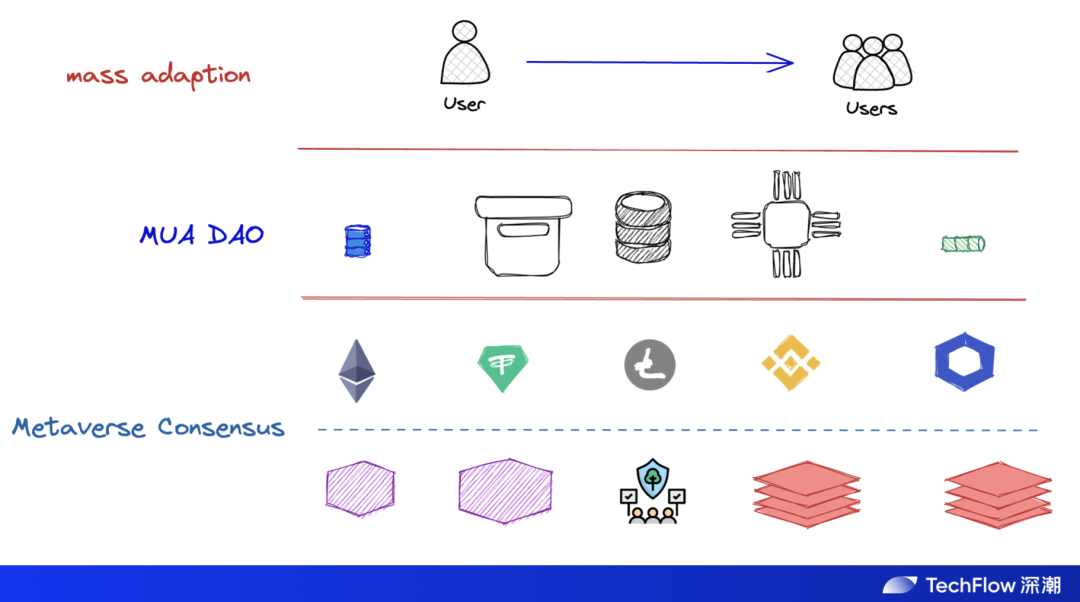
Additionally, a co-branding and co-development model will be adopted, giving users control over the underlying data. Users' assets will be able to migrate freely across multiple platforms and chains, creating a complete user experience. For example, MUA DAO and Second Life have established a mutual recognition mechanism for creator qualifications, taking the first step in market expansion.
Step Two: Make Interaction the Main Theme of the Metaverse
Users do not need to consider whether they are entering the metaverse offline or online; a unified interactive experience will eliminate the barriers that existing enterprises face in reaching users. Specifically, MUA DAO held competition events in 2022 in collaboration with multiple metaverse platforms to enhance developer experience and user conversion. They even collaborated with MIT to conduct competitions and course partnerships, providing complete teaching and developer training to enhance Gen Z users' understanding of the metaverse.
A typical case is during the Tokyo Marathon, where MUA DAO initiated the MUA Flash Ops design activity, creating an achievement and display system in the metaverse for participants. The results in reality will seamlessly connect with the on-chain data and can be displayed and migrated across any universe, which is a beneficial attempt to correctly combine SBT and DID application scenarios.
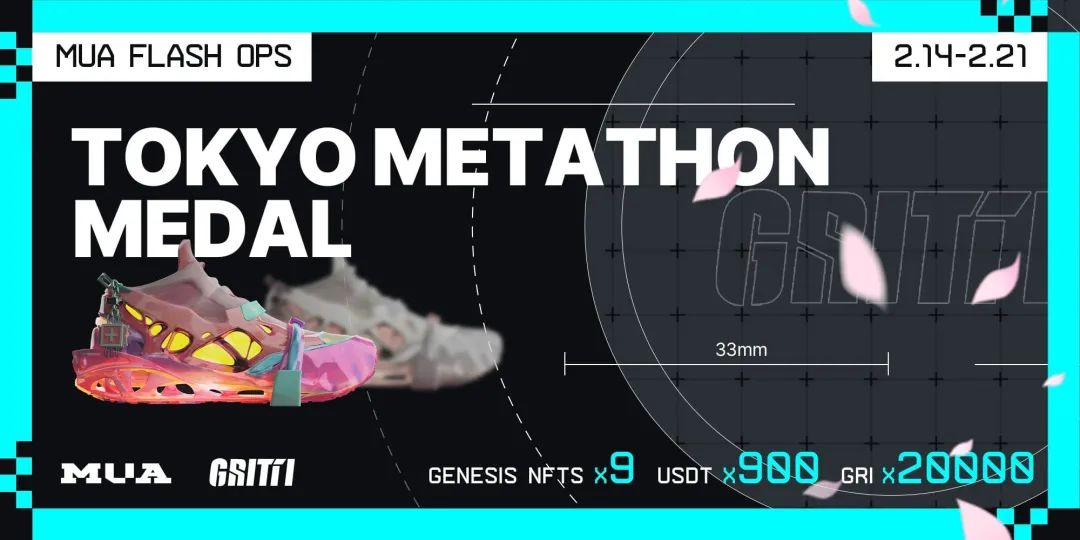
Once the number of developers and users reaches a certain scale, new commercialization scenarios will naturally emerge, leading to the third step of repairing the fragmentation.
Step Three: Make RWA (Real-World Assets) the Value Support of the Metaverse
MUA DAO's collaboration with Alibaba is a typical example of the integrated development path between Web3 and Web2.
- On one hand, MUA DAO will position itself as middleware for metaverse development, turning all functionalities into APIs for developers to use and for metaverse platforms to call.
- On the other hand, the Alibaba Cloud ecosystem and MUA DAO will work to bring in more real economy. For instance, any enterprise user linked to Alibaba Cloud can directly discuss customized metaverse solutions with MUA DAO through Alibaba Cloud's BD system and the Cloudverse login page.
Since the announcement of the Cloudverse solution at the Avalanche Summit, MUA DAO has already provided customized solutions for over 15 real enterprises within a week, covering industries such as energy, real estate, and banking, aiming to bring Web2 enterprises into the metaverse.
For example, MUA DAO has collaborated with wallets like Metamask and unipass, where unipass allows users to log into crypto wallets directly via email and other means, enabling any enterprise to enter the metaverse through this path while maintaining Web3 encryption and Web2 user-friendliness.
After the three-step strategy, MUA DAO's thoughts on the future of the entire metaverse have taken shape, and the journey continues. Finding real application scenarios for the metaverse from practice will be crucial for its success.
MUAverse: The Metaverse Sailing into a New Era
The metaverse has not faltered; MUA DAO will persistently work to repair the current shortcomings and regrets. Based on the metaverse as a foundational infrastructure for human life, we can envision how the metaverse will sail into a new era after the success of the three-step strategy.
In fact, entertainment should never be the only label of the metaverse. Liu Cixin once said, "Humanity wants the stars and the sea, but you gave me Facebook." In a broader interstellar dimension, the vastness of the universe should bear humanity's ambition, and the richness of the metaverse will encompass all imagination.
Let’s take a more "mundane" perspective to think about several application scenarios of the metaverse, which will at least include updated business models, all-encompassing scenario-based functionalities, and the freedom for individuals to develop comprehensively within the metaverse.
Business Model Evolution: Breaking Through the Land Rent Model
The metaverse has developed to this point, which can roughly be divided into two types of business models. The early model mainly involved land trading, which is analogous to the real estate model in commercial circles; as long as one keeps accumulating land, they can rent or sell it as foot traffic increases, essentially a chain version of land rent economics.
MUA DAO is actively exploring a second business model, driven by real usability to attract more people and businesses, thereby achieving a closed-loop logic of commercial sales, similar to how Taobao replaced offline commercial circles, fundamentally an evolved version of traffic economics.
The real usability of the metaverse will address the disconnection between multiple chains, multiple platforms, virtual economies, and real economies, thereby creating an inclusive on-chain commercial space, with MUAverse serving as the entry point for this traffic distribution.
Before MUA DAO, traditional enterprises had attempted to enter the metaverse, with the fashion industry being the most typical. Representatives of the fashion industry include sports brands like Adidas, Nike, and PUMA, as well as luxury brands like Prada, LVMH, and Bulgari, and even well-known industrial and financial consumer giants like Porsche and Visa. However, the problem lies in the lack of real, complete usage scenarios.
Currently, the product logic of the metaverse is inconsistent. Yuga Labs focuses on NFTs, while Sand and others center around land. MUA DAO believes that "scenarios" are fundamental; from user entry to developer construction, and the connections between various metaverse platforms, the scenario issue must be resolved.
Taking RTFKT, which collaborates with Nike, as an example, the main issue is the lack of social attributes and connections to the real world. In gradual attempts, there will be more binding with the sneakers sold in reality, but overall, there remains a clear disconnection, causing NFTs to lack clear value support.
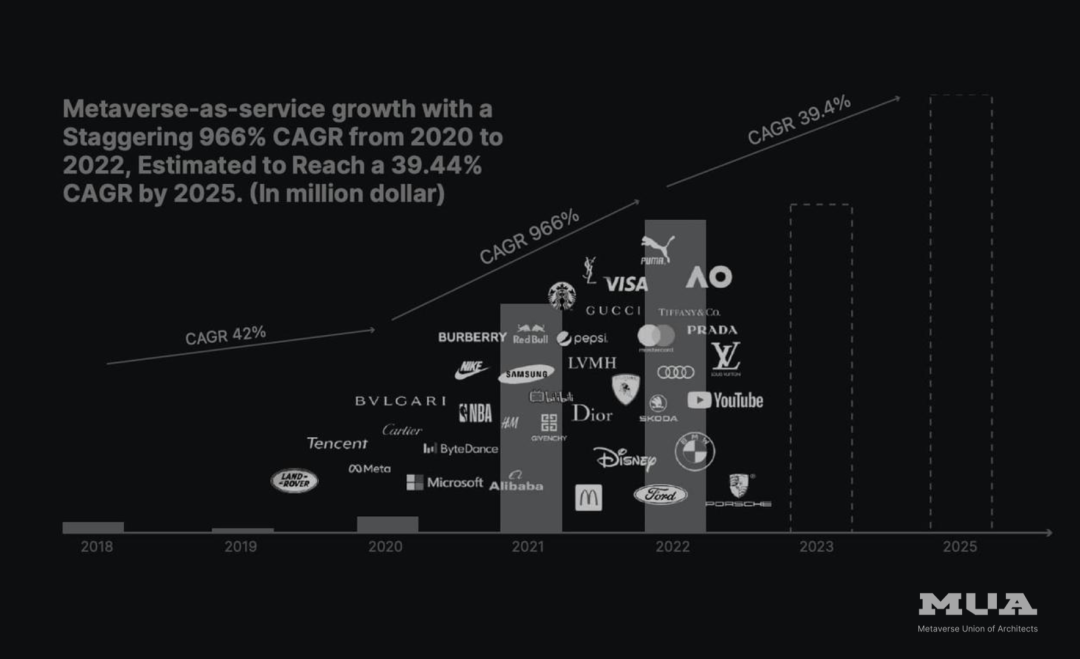
MUAverse's idea is to give NFTs a complete life within the metaverse. When users enter, they will be assigned a 3D version of DID, allowing direct communication with on-chain addresses and other identities within the metaverse. The emergence of a unified identifier will build a clear behavioral model from the user side.
Scenario Society: Everything is a Scenario, Scenarios are Everything
We can imagine a scenario where the uses within the metaverse are rich enough; what can we do within it? When all barriers offline and online can coexist, how do we distinguish our location? Perhaps there is no need to define it; we just need to consider adapting to the situation.
- First, how should offline and online interactions be conducted? MUA DAO provides a real case; for example, if a rapper holds a concert, the typical process is as follows: first, personal branding and pre-event promotion are needed, and collaboration with QuestN can accomplish this. QuestN allows users to participate in events to earn tokens, NFTs, and OATs as proof.

The same Rapper image displayed in Ultiverse and SecondLive
- Next, MUAverse will build a unified asset and material system, starting from MUAverse as the center, directly mapping to other metaverse platforms. After the concert, a unified effect evaluation will be conducted, and throughout the process, there is no need to distinguish which platform was participated in.
- Finally, NFTs and achievement systems minted on-chain can directly correlate with real physical entities. An interesting case occurred during a Web3 event in Hong Kong, where MUAverse minted on-chain materials that directly corresponded to offline T-shirts.
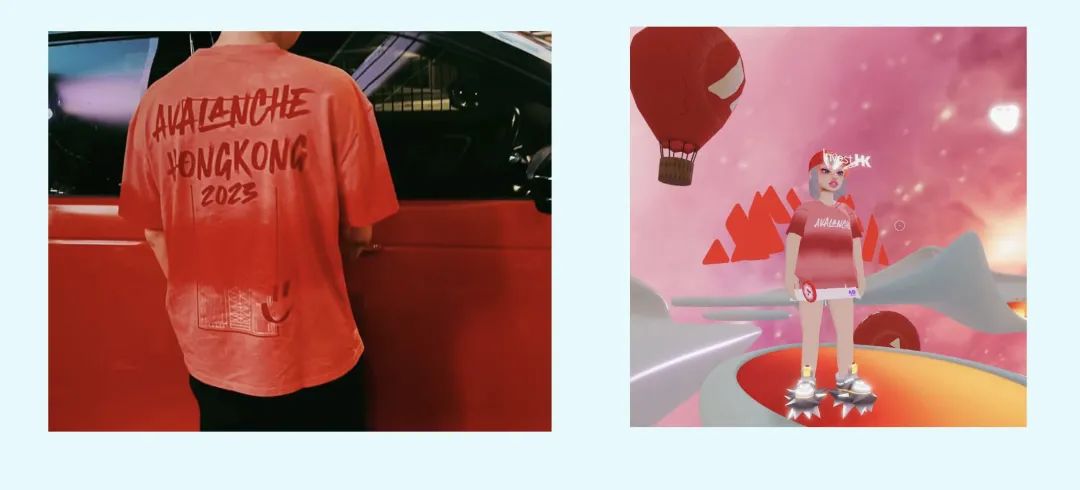
If this serves as a starting point, MUAverse will be a pioneer in the scenario-based metaverse, and such commercial scenarios will not be limited to any specific product form. Whether it is the Bitcoin NFT ecosystem represented by BRC-20 or real-world assets represented by RWA, they can be packaged within MUAverse, providing a more efficient trading experience within the metaverse.
MUAverse itself possesses strong inclusivity. Taking the booming AIGC products as an example, the MUAverse engine supports avatar creation across multiple platforms and has gradually begun to adapt to AI-NPC and other digital human-related products. The metaverse itself creates scenarios, and the materials on it can be endless, without being limited to any specific mindset.
Starting with the end in mind, MUAverse will become an on-chain commercial circle, fundamentally different from any existing blockchain dApp, and create richer commercial scenarios.
Futurism: Achieving Personal and Comprehensive Freedom of Development
Beyond the capabilities of commercialization and scenario creation, the MUAverse version of the metaverse ultimately aims to empower and enhance the capabilities of ordinary users. As Scroll founder Zhang Ye said, "Crypto is all about community ownership."
Lose Meta, lose users; lose users, lose everything. How to provide users with more possibilities to ensure they do not become passive consumers in the future metaverse era is also a key consideration for MUAverse's development focus.
Therefore, the role of users cannot be fixed. The construction of an open metaverse world and ownership will also be granted to all community members. The most typical example is the architect (mArchitects) achievement system, where MUA hopes to gather talented creators within the DAO, generating new production relationships through a Web3 organizational approach, ultimately creating a revenue model that far exceeds traditional internet models.
In the current creator economy model dominated by centralized platforms, creators and designers may create everything, but due to their unequal position with the platform, they find it difficult to obtain revenue commensurate with their contributions.
For example, in the real world, even landmark commercial buildings designed by master architects can only earn meager profits within the entire revenue system. Most of the profits are taken by developers, construction companies, and supporting financial institutions. In the metaverse, production relationships are readjusted, allowing creators to earn sustainable profits within an equal, distributed revenue system.
In addition, MUA DAO also has its own badge system, categorizing community members based on their design abilities into different levels. Community members will be granted different permissions within the DAO based on their NFT badge levels, ensuring the decentralization of the DAO from a governance perspective. Mature and systematic designer resources will also help avoid the cold start problem on the developer side, ensuring that developer capabilities can keep pace with market development.
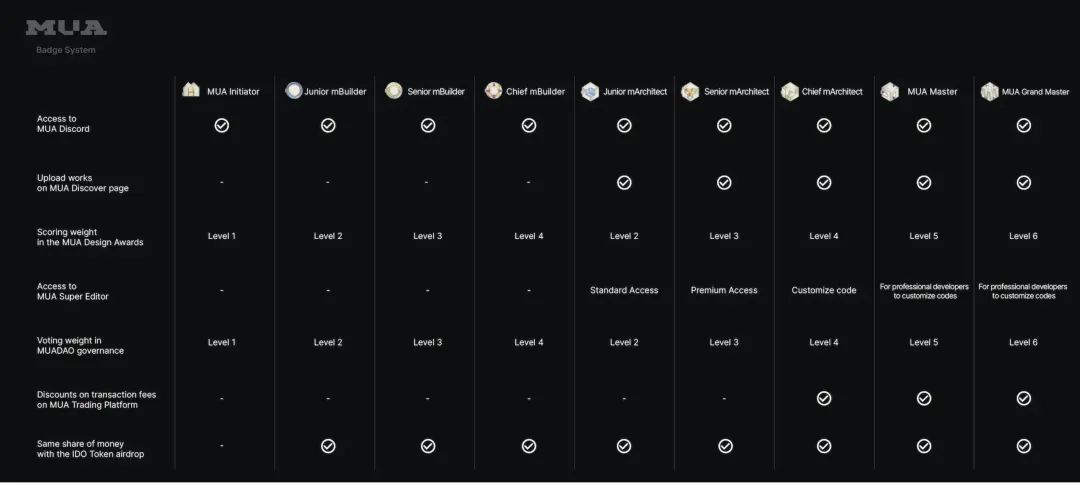
For instance, the Build Your Meta-skyline competition in collaboration with Ultiverse encourages various architects to use the MUA engine to develop city skylines within the metaverse, bringing dreams akin to "Cyberpunk 2077" to the public eye, not limited to a single metaverse. Assets developed through MUA can also be replicated across other platforms, generating a continuous flow attraction effect.
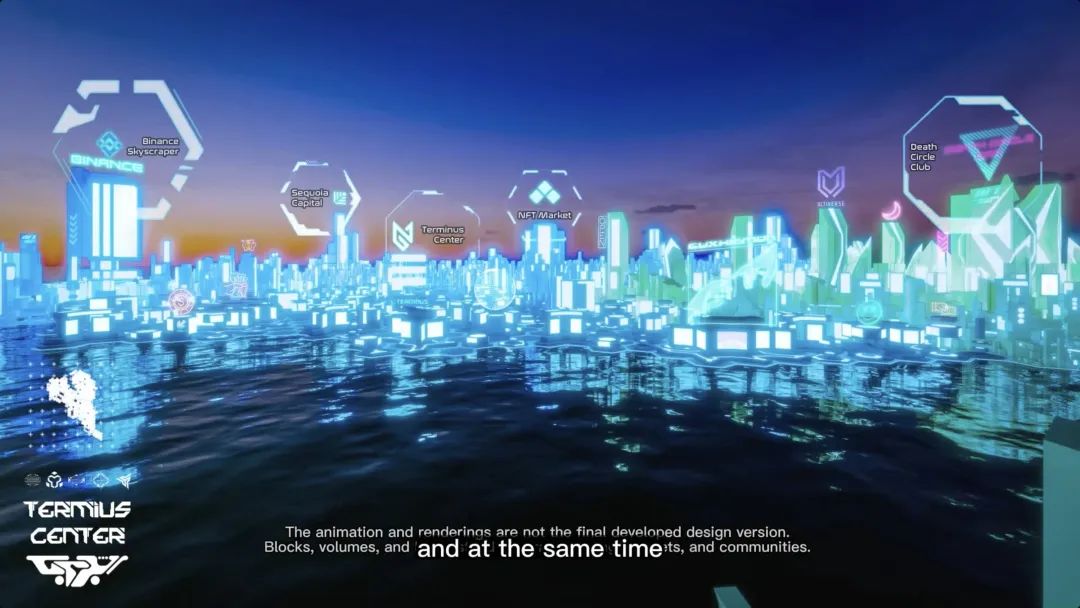
MUAverse itself has different engines and development condition settings, allowing for the creation of personal artistic materials or the development of one's own battle games through the engine. Building on traditional Unreal and Unity, MUAverse will focus more on the development needs of the metaverse itself, reducing the barriers to entry and making NFT asset creation more convenient, allowing for greater focus on the build itself.
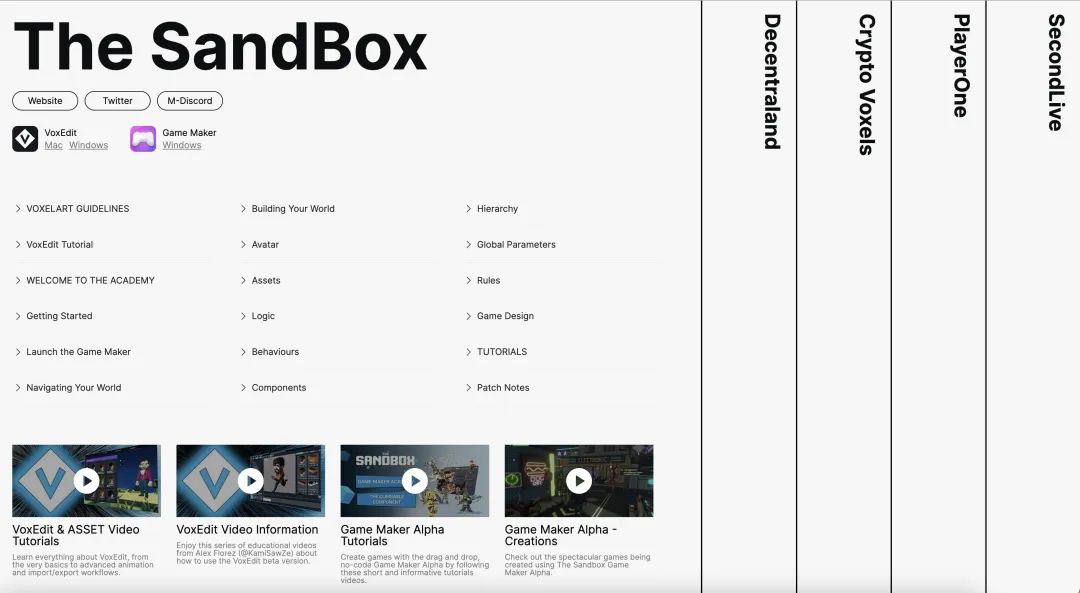
The Distant Yesterday World and the Tomorrow's Future Nation
Deceived by our favorite things, that is our optimism.
Since the pandemic in 2020, some humans have gradually adapted to online interactions. We once thought this was the entirety of the metaverse: cheap pixel combinations, stiff and dull digital humans, and heavy, expensive hardware. However, by 2022, we began to believe that the metaverse would not arrive, thinking that the familiar old world would continue forever.
But history has not ended. The current wave of the metaverse's rise and fall is merely a normal segment of its development. Its objective laws continue to march towards the future at their own pace. Humanity's commercialization model can no longer sustain itself, from the global trend of de-globalization and the rise of localization to the unsustainability of on-chain land and small images. Real asset support, universal interaction standards, and consistent asset formats are all converging within the construction of MUAverse, aiming to build a new behavioral economic model over the next decade, where everything on-chain, everything human, is everything within the whole universe.
The human world will only be a subset of the metaverse.
Within the metaverse of MUAverse, ample and free development space is left for everyone. Unlike the horrors of consciousness uploading in "Black Mirror" and "Westworld," MUAverse does not believe that the virtual and the real, offline and online, Web2 and Web3 cannot coexist compatibly. Instead, it chooses to confront the current fragmented, dull, and self-inventing pseudo-metaverse reality, returning to the most basic consensus people had when they began creating the internet—interconnectivity—while utilizing MUAverse to achieve real commercial adoption, linking individual data and one platform island after another, ushering in a new paradigm revolution for the metaverse.
The familiar old world we know will ultimately move towards history, just as the pattern of competition has repeatedly played out in history. The one who defeats the old king will certainly not be repeating past experiences; the one who defeats Meta will certainly not be another Meta.
And MUAverse is exploring a new future. Born to Web3, MUA DAO's collaboration with millions of enterprise users covered by the Alibaba Cloud ecosystem will become a new positive growth point guiding the entire metaverse track. The formula for paradigm transformation has already been written, and with the preliminary technological accumulation, the middleware technology for the metaverse is maturing. Let us look forward to MUA DAO's interactive metaverse new world!










